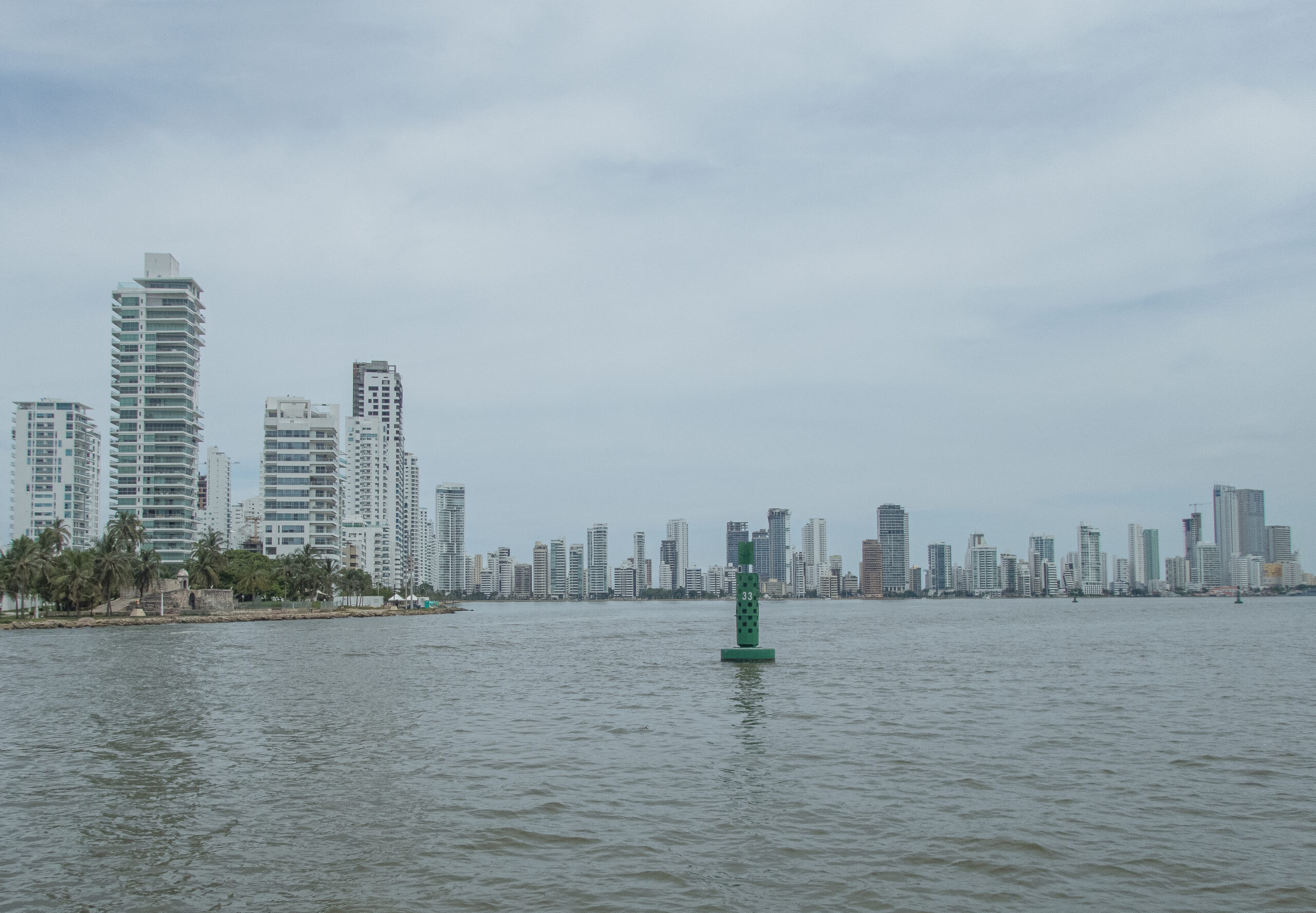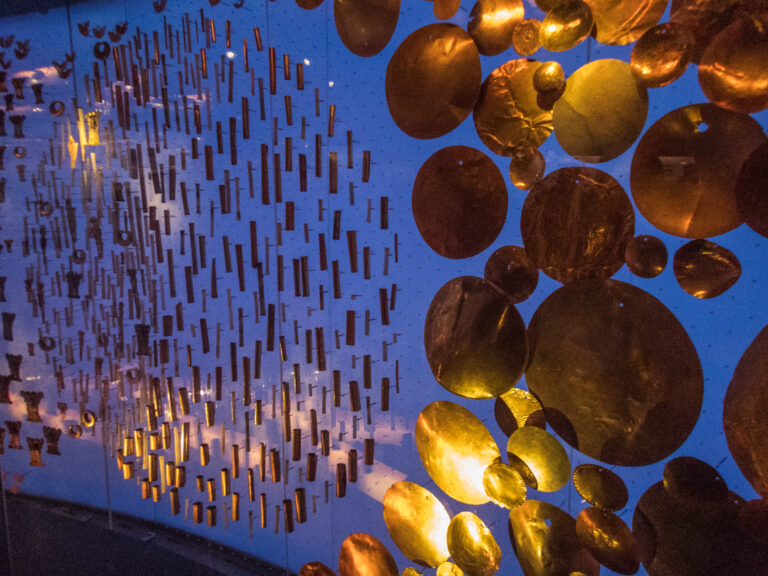Cartagena de Indias
In 1533, the Spanish took advantage of a natural sheltered bay to found the port of Cartagena de Indias. The city has modern high rise development near the port, but the real delight is in the old quarters of this magnificent, walled city. Both the historic centre and Getsemani have undergone major refurbishment in recent years. Restaurants, guesthouses and shops provide a new lease of life to old colonial buildings.

Getsemani
Five days at sea taking the maximum dosage of seasickness tablets and I was run down and ready for some comfort at the charming hostal I had booked into in Getsemani. For the first couple of days in Cartagena the gentle up and down of sea motion continued to accompany me.
In contrast to the old city, Getsemeni is earthy with parts still derelict. Although tourism is on the rise in this district, there are still lots of locals getting on with their daily life.



Cartagena de Indias – The Old City
The old city is stunning. It is where the largest and most impressive of the city’s “palacetes” can be found. It is a popular destination with cruise ships, and very touristy.

The museum of gold has a small and high quality display of pre-Colombian artefacts. “The Palacio de La Inquisicion” is a grim but interesting place to visit with exhibits and accounts from those who experienced the Spanish Inquisition.
San Felipe Castle
The San Felipe Castle (El Castillo de San Felipe) of Cartagena de Indias was built in 1657 on top of a promontory. As you can see below, it has good views to help its defence. Just as well, as it had to survive regular attacks from the French and the British.




The next step was Santa Marta. I took a “colectivo” van (rather like a large shared taxi) to get there. A cheap and cheerful way to travel.





